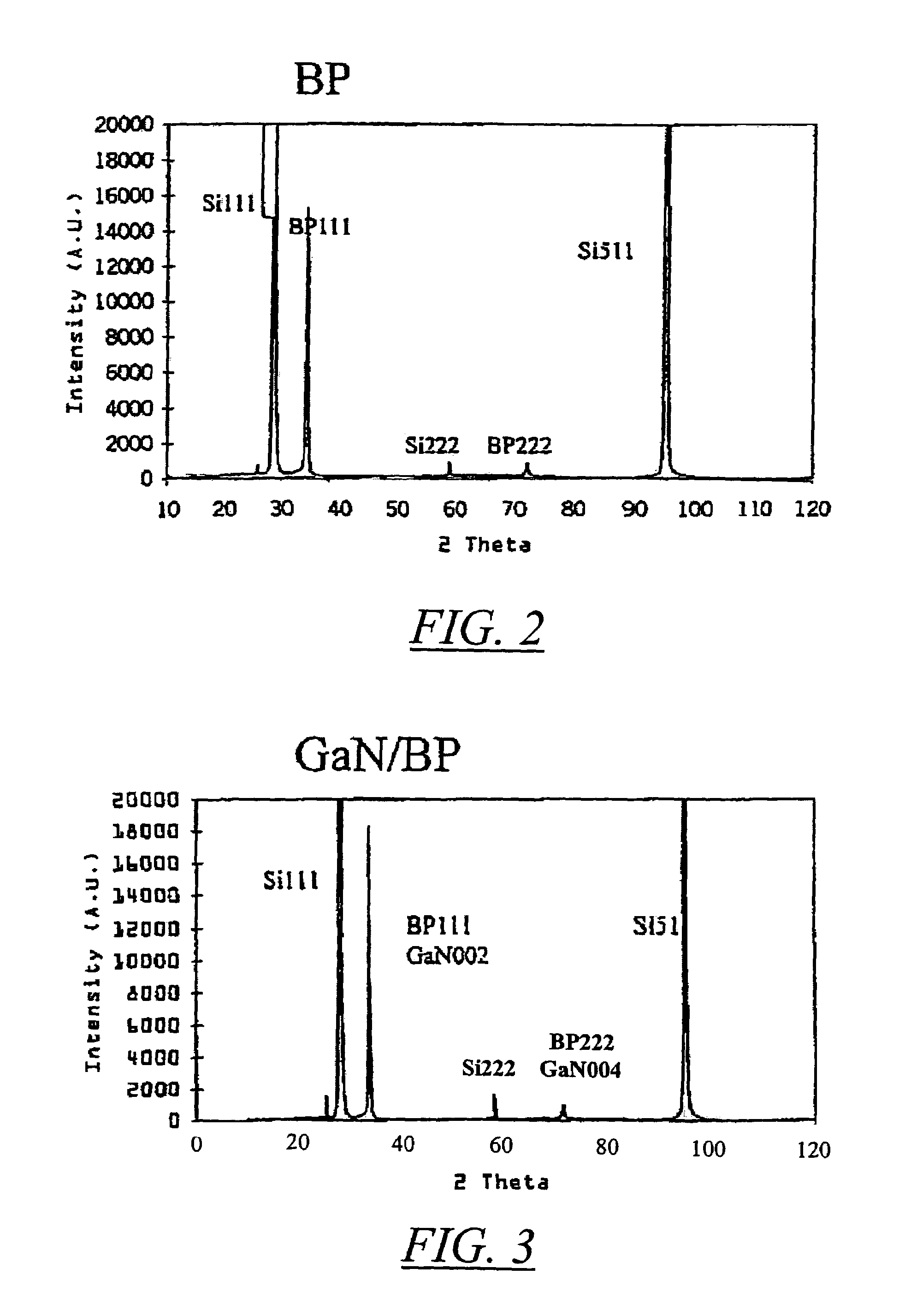Group III-nitride on Si using epitaxial BP buffer layer
a buffer layer and nitride technology, applied in the direction of semiconductor/solid-state device manufacturing, semiconductor devices, electrical equipment, etc., can solve the problems of difficult to obtain gan bulk crystals, no readily available suitable substrate materials, expensive and only available in small wafer sizes
- Summary
- Abstract
- Description
- Claims
- Application Information
AI Technical Summary
Benefits of technology
Problems solved by technology
Method used
Image
Examples
example
[0035]It should be understood that the examples and embodiments described herein are for illustrative purposes only and that various modifications or changes in light thereof will be suggested to persons skilled in the art and are to be included within the spirit and purview of this application. The invention can take other specific forms without departing from the spirit or essential attributes thereof.
[0036]Commercial Si (111) substrates were provided. The Si substrates were first cleaned in warm trichloroethylene(TCE) / acetone / methanol and etched for one minute in dilute HF, such as 1% HF. The wafers were loaded into a reactor. Prior to BP growth, in-situ hydrogen reduction (e.g. 4% H2 in N2) was performed for ten minutes at or near the BP epitaxial growth temperature, such as at 1000° C. for an 1100° C. BP deposition process to remove the native oxide on the surface of the silicon substrate.
[0037]CVD of epitaxial BP on Si (111) was performed using boron trichloride (BCl3, 99.5% p...
PUM
| Property | Measurement | Unit |
|---|---|---|
| sublimation temperature | aaaaa | aaaaa |
| temperature | aaaaa | aaaaa |
| temperature | aaaaa | aaaaa |
Abstract
Description
Claims
Application Information
 Login to View More
Login to View More - R&D
- Intellectual Property
- Life Sciences
- Materials
- Tech Scout
- Unparalleled Data Quality
- Higher Quality Content
- 60% Fewer Hallucinations
Browse by: Latest US Patents, China's latest patents, Technical Efficacy Thesaurus, Application Domain, Technology Topic, Popular Technical Reports.
© 2025 PatSnap. All rights reserved.Legal|Privacy policy|Modern Slavery Act Transparency Statement|Sitemap|About US| Contact US: help@patsnap.com



